THIKSEY MONASTERY, LADAKH: A Must-Visit Destination
Thiksey Monastery is one of Ladakh’s most beautiful and largest Buddhist monasteries. It is affiliated with the Gelug School of Tibetan Buddhism. Due to its unique setting on a hilltop with surrounding snow-clad mountains, it affords breathtakingly gorgeous views of vast landscapes. The colourful built forms in red, yellow ochre, and white, with a fusion of traditional and contemporary architecture and craftsmanship, are the vital aspects of its beauty.
The Thiksey Monastery is in Thiksey, 19 km east of Leh in Ladakh. Built-in the early 15th century, this twelve-storied monastery complex crowns the hilltop at 11,800 feet. It houses several items of Buddhist art, such as stupas, statues, thangkas (prayer flags), wall paintings, books, etc. The monastery is approachable through Leh-Manali Highway, where a Thiksey-Gompa Road bifurcates and passes through a splendid golden gateway to reach the destination. A panoramic view of the monastery atop the hill can be enjoyed from this ceremonial gateway.

The entire campus of the monastery has been developed on-and-around the hill in ascending order. It is structured imaginatively in a unique hierarchical manner, where the top of the hill occupies the monastery and the official residence of the Head Lama. In contrast, the foot of the hill has living quarters. All the buildings are well-spaced and perfectly placed as per topographical conditions. The complex of the monastery crowning the hill has been adorned with bright red, yellow ochre, and white colours. The remaining development, mainly dwelling units down the hill, is white. Due to this peculiar fort-like configuration, the Thiksey Monastery resembles the Potala Palace in Lhasa, Tibet- the former official seat of Dalai Lamas. It is thus referred to as ‘Mini Potala.’
* Click to Follow Voice of Ladakh on WhatsApp *

The Thiksey-Gompa Road ascends to a cul-de-sac and provides access to the large parking lot at the base of the monastery. From here onwards, the entire complex has been kept pedestrian with no vehicular access. A wide serpentine path ramps up towards the main entry to the monastery. A beautiful red-and-golden gateway invites the visitors in a ceremonial gesture. A large retaining wall along the hill towards the right is well adorned and provided with rotating prayer wheels – a typical feature of Buddhist architecture. One can enjoy a magnificent upward view of the monastery atop the hill.
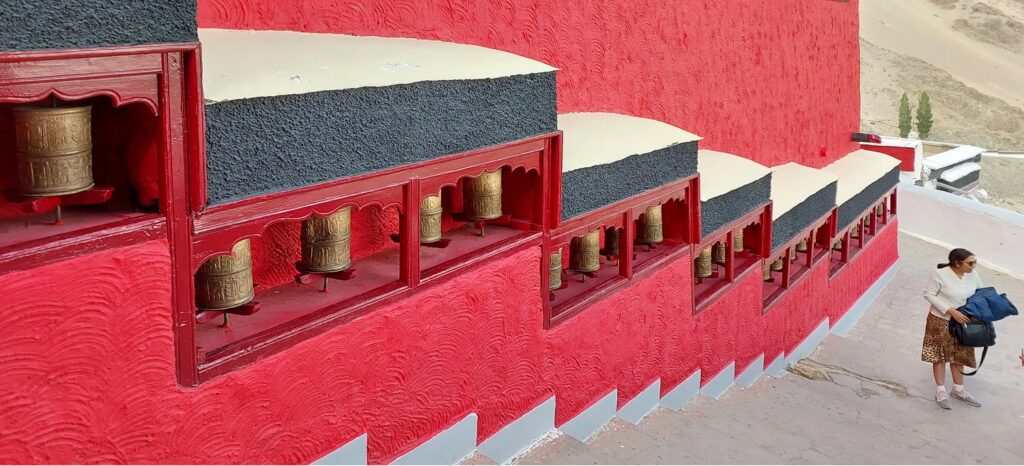
After crossing the gateway, a low-height, linear building on the left serves as a restaurant and gift shop. A wide colonnaded verandah with wooden columns and arches in red adds a touch of liveliness and enriches the walking experience toward the monastery. The ramped walkway culminates at the start of a broad flight of steps in dressed stone. This zigzag stepped pathway takes the visitors up to the main entrance to the monastery. Walking up this stepped pathway offers a memorable experience, interspersed with many exciting stopovers like a giant rotating-prayer-wheel structure, a stupa, and many expansive decks with benches for rest. While relaxing on these decks, one can enjoy spectacular views of the sprawling landscape of the Ladakh Valley and snow-clad mountains in the background.
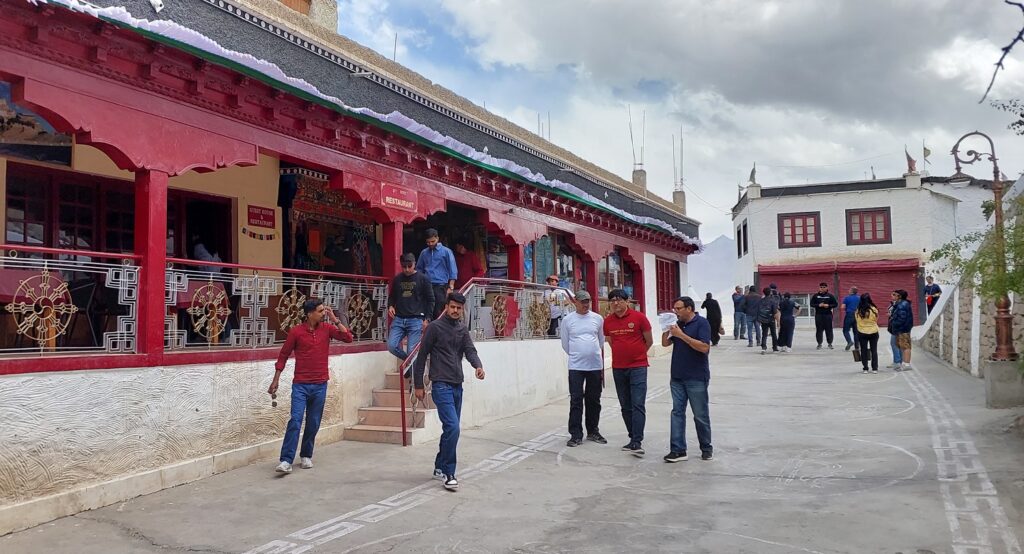
At the culmination of the flight of steps, one enters a large courtyard or plaza through an entrance vestibule. This courtyard is the hub of many activities. It serves as an entrance plaza for thousands of visitors who visit the monastery daily. All the essential components of the monastery are also accessible from this plaza, of course, through further flights of steps as these are placed at higher levels. The plaza also serves as a venue for the annual festival of the Thiksey Monastery. The festival is known as the Gustor ritual, held from the 17th to 19th day of the ninth month of the Tibetan calendar, which usually falls in October -November. Sacred dances like mask dance or Cham dance are performed as part of this ritual. Besides the religious rituals during the festival, a trade fair is held at the base of the monastery, where villagers from all over Ladakh come to barter, trade items, and socialize.
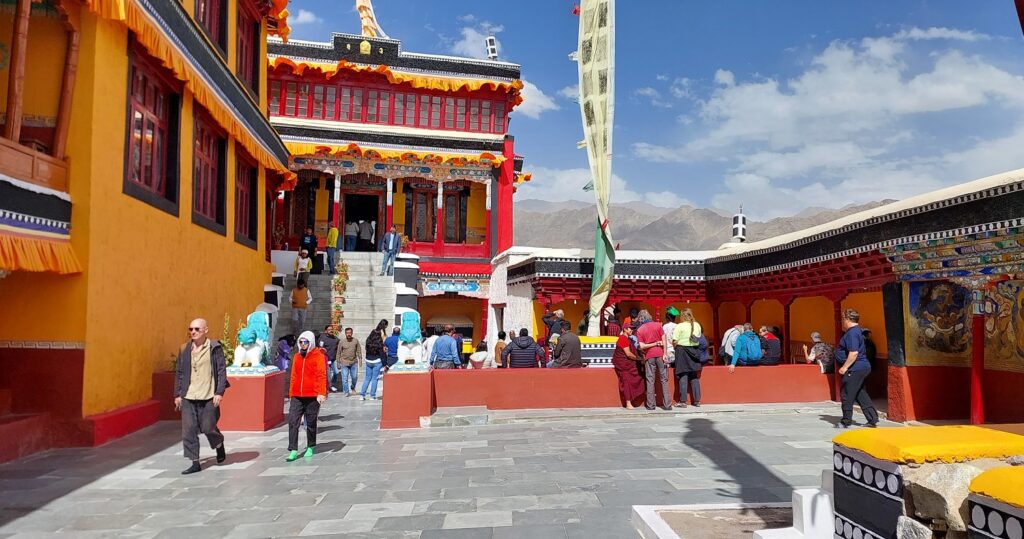
Among the other hallmarks of the Thiksey Monastery are Maitreya Buddha Temple, Tara Temple, Assembly Hall, Lamokhang Temple, Library, Rooftop, and Nunnery. Maitreya Temple contains a 15-metre-high statue of Maitreya Buddha or future Buddha. It is a giant statue in Ladakh and covers two stories of the building. This temple was erected to commemorate the visit of the 14th Dalai Lama to this monastery in 1970. The grand statue is made up of copper and clay and painted gold. The Tara Temple is dedicated to Goddess Tara, and there are 21 images of Goddess Tara showcased on glass-covered wooden shelves.
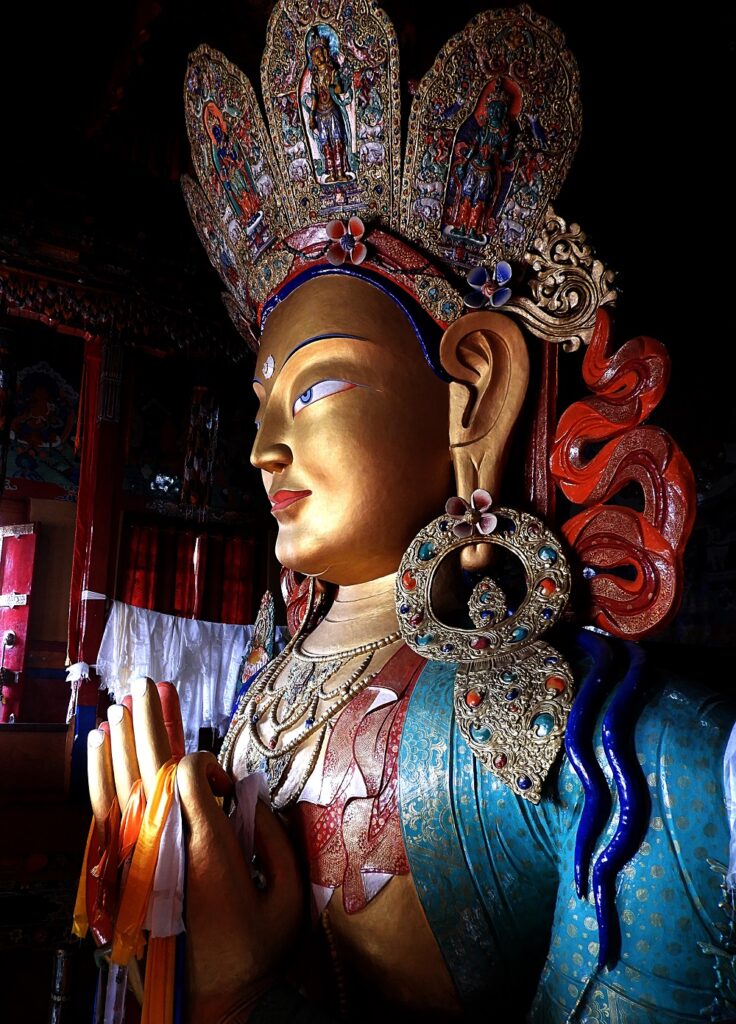
While standing in the courtyard, one can see two large buildings – one in red colour and the other in yellow ochre. The red-colored building has the guardian deity shrine, and the yellow one has the assembly hall. The Assembly Hall has a seat for Dalai Lama in the centre, the Head Lama on the right, and a deity pictured on the left. The wall depicts the Tibetan Calendar with the Wheel of Life at the main prayer hall’s entrance. Next to the wall is the main prayer room with many printed and handwritten books. The hall also contains murals of many deities. Behind the prayer hall is a Buddha shrine that contains statutes of Maitreya, Bodhisattvas, and Manjusri.
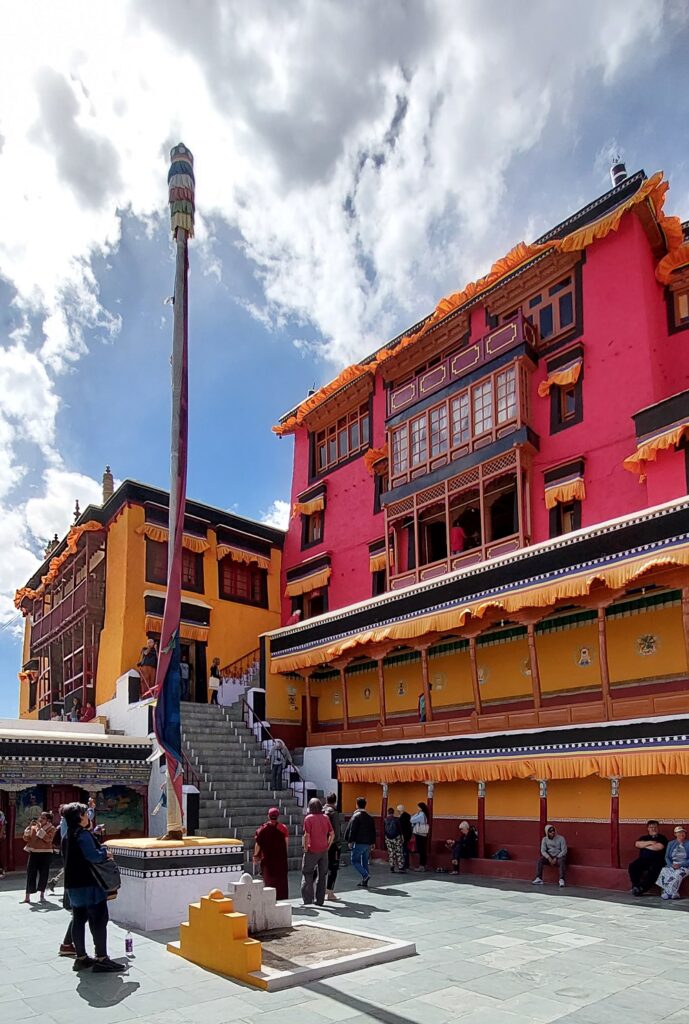
On the top of the monastery is Lamokhang Temple, a storehouse of several volumes of Buddhist scriptures. The official residence of the Head Lama is also at this level. The rooftop terrace of the monastery offers breathtaking views of the cold-desert landscapes of Ladakh. While on a trip to Ladakh, the Thiksey Monastery is a must-visit destination for people of all interests.
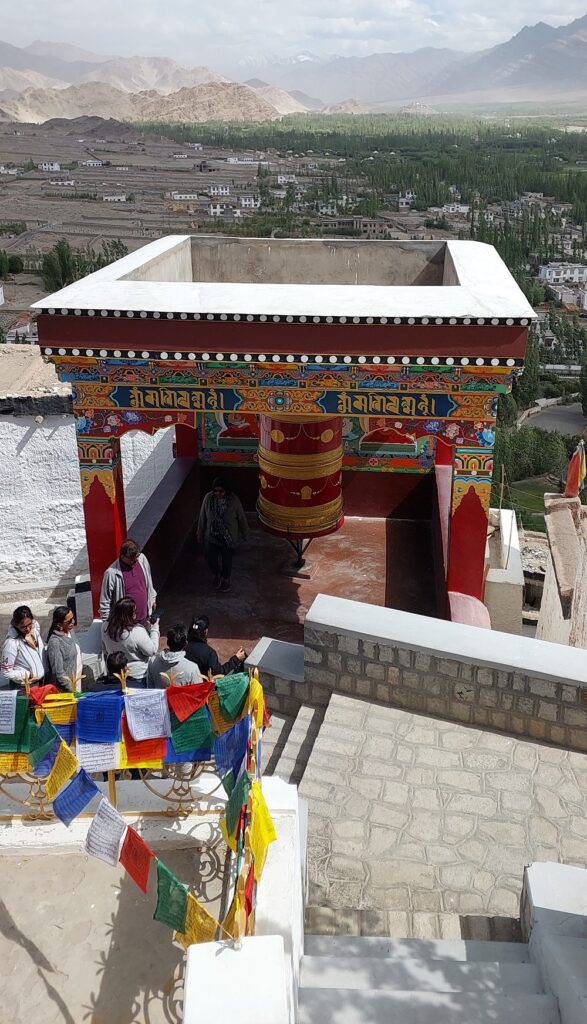
1 Comments
Leave a Reply



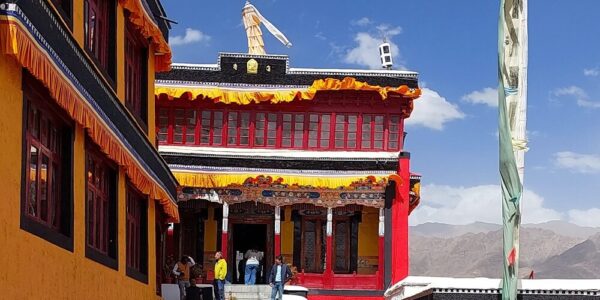

Thanks a lot, ji, for publishing my article so nicely.
Regards,